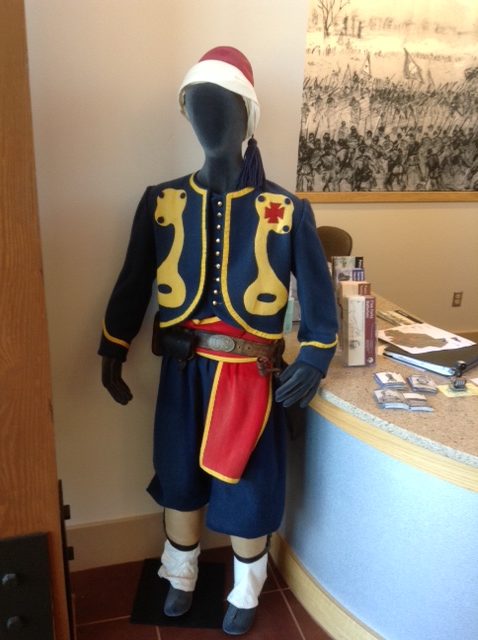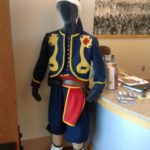Ask Civil War enthusiasts about the term “The Blue and the Gray” and most will respond: “Those are the colors of the uniforms men wore during the Civil War; the Union wore blue and the Confederates wore gray.” The answer is more complex. Union and Confederate armies had Zouave units that wore a colorful uniform originating in the French army serving in Algeria and Morocco. Future Union general George B. McClellan, who had seen French Zouave units in the mid-1850’s, called them the “finest light infantry that Europe can produce … the beau-ideal of a soldier.” The North African tribal groups who originated these uniforms dwindled over time, but French nationals retained the name and distinctive outfits. French Zouaves who fought during the Crimean War were seen as the epitome of courage and military prowess.
The Zouave’s elite image soon found a home in the U.S. One of the first units to adopt the Zouave uniform was the 11th New York. Organized by Elmer E. Ellsworth, the regiment and its leader quickly found fame when Ellsworth was killed in Alexandria, Virginia in May 1861 as he and his “Fire Zouaves” took down a secessionist flag. (Called the “Fire Zouaves” because Ellsworth recruited many of his men from the ranks of Manhattan’s volunteer firemen.) Ellsworth quickly became a Union martyr and Zouave units began springing up in the following months. Eventually, the Union army fielded more than seventy Zouave units. The Confederate army had about twenty-five Zouave regiments.
Zouave uniforms varied depending on the unit, but the 155th Pennsylvania’s Zouave uniform was typical. The unit’s regimental history describes it thus:
“Dark blue knee-breeches with material enough in one pair to make two pairs of ordinary pantaloons, and shaped not unlike the bloomers costume worn by women … Next came the jacket … trimmed with yellow at the collar and the wrists and down the fronts. A feature of the uniform was the red flannel sash …. The sash was trimmed with yellow and was wound around the waist of the soldier …. The footgear consisted of white canvas leggings which came down over the shoes, and were buckled along the sides and around the ankles, reaching halfway to the knees, where breeches were fitted into them.
Lastly the greatest and most impressive part of the uniform was the turban after the Turkish plan. It was composed of a sash of white flannel about a foot wide and ten feet long, which would be nicely wound, so as to set or fit on a red fez skull cap to which was attached a blue tassel.”
The Zouave uniform distinguished its wearer as a member of an elite unit. But the distinctive uniform also had the disadvantage of drawing attention to any straggler who would be quickly apprehended by the provost guard and returned to his unit for punishment.
Photograph of 155th Pennsylvania Regiment Zouave uniform displayed at Five Forks Battlefield Visitor Center in Virginia.
Text based on Your Brother in Arms: A Union Soldier’s Odyssey.


Recent Comments